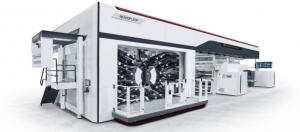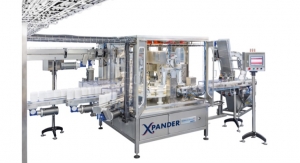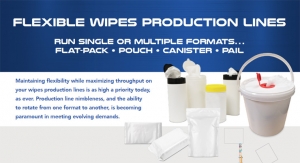06.21.21
Beginning June 25, 2021, furniture makers globally are required to ensure compliance with a new national flammability test standard for any upholstered furniture they sell in the U.S. Beckmann Converting, Inc, through its Sandel International division, offers two different fire barrier fabrics which pass TB 117-2013 “smolder” tests originally established in California in 2013 to limit consumer exposure to chemical flame retardants. Known as the Safer Occupancy Furniture Flammability Act, or “SOFFA”, the new regulation was incorporated in the Covid-19 Regulatory Relief and Work from Home Safety Act passed by Congress and signed into law by the President on December 27, 2020.
Among the options available to furniture manufacturers is use of a fire barrier material between the outer covering fabric and the foam contained in seat cushions and back cushions. TB 117-2013 has a specific testing protocol for use in evaluating fire barrier materials. Two different Sandel fire barrier fabrics, referred to as Style #14502 and Style #60502, have both passed the rigorous test procedure.
“We believe the two Sandel fire barrier fabrics offer furniture manufacturers globally simple, lowest total cost solutions for meeting the new regulations,” reports Ray Piascik, director of marketing and sales for Beckmann Converting and its Sandel division. “Sandel customers selling their furniture in California and a few other jurisdictions that had also adopted the standard report our fire barrier materials are easy to incorporate without placing limitations on their designs.”
The primary difference between the two styles is that #14502 is a breathable material while #60502 is non-breathable. Furniture makers have been known to incorporate both versions into their designs to allow air breathability while maximizing flammability protection. Both materials are available as stock items in White and by special order (made to order) in Black.
The Sandel materials are lightweight (4 to 5 oz/sq yard) and will not ignite, melt, or drip. They are flexible and will not shrink, stretch, or rot over time. Both styles exhibit minimal smoke emission. Further, they are water repellant and non-allergenic. Specification sheets available from Sandel provide additional characteristics.
“Sandel fire barrier fabrics have been used reliably in a wide range of applications by manufacturers for over 30 years,” adds Piascik.
Variations of the materials are made into mattress and pillow facing, smoker aprons, fire blankets, and welding cubicle walls. One version is designed to meet military specifications and is used onboard naval vessels for smoke and fire protection.
Among the options available to furniture manufacturers is use of a fire barrier material between the outer covering fabric and the foam contained in seat cushions and back cushions. TB 117-2013 has a specific testing protocol for use in evaluating fire barrier materials. Two different Sandel fire barrier fabrics, referred to as Style #14502 and Style #60502, have both passed the rigorous test procedure.
“We believe the two Sandel fire barrier fabrics offer furniture manufacturers globally simple, lowest total cost solutions for meeting the new regulations,” reports Ray Piascik, director of marketing and sales for Beckmann Converting and its Sandel division. “Sandel customers selling their furniture in California and a few other jurisdictions that had also adopted the standard report our fire barrier materials are easy to incorporate without placing limitations on their designs.”
The primary difference between the two styles is that #14502 is a breathable material while #60502 is non-breathable. Furniture makers have been known to incorporate both versions into their designs to allow air breathability while maximizing flammability protection. Both materials are available as stock items in White and by special order (made to order) in Black.
The Sandel materials are lightweight (4 to 5 oz/sq yard) and will not ignite, melt, or drip. They are flexible and will not shrink, stretch, or rot over time. Both styles exhibit minimal smoke emission. Further, they are water repellant and non-allergenic. Specification sheets available from Sandel provide additional characteristics.
“Sandel fire barrier fabrics have been used reliably in a wide range of applications by manufacturers for over 30 years,” adds Piascik.
Variations of the materials are made into mattress and pillow facing, smoker aprons, fire blankets, and welding cubicle walls. One version is designed to meet military specifications and is used onboard naval vessels for smoke and fire protection.






